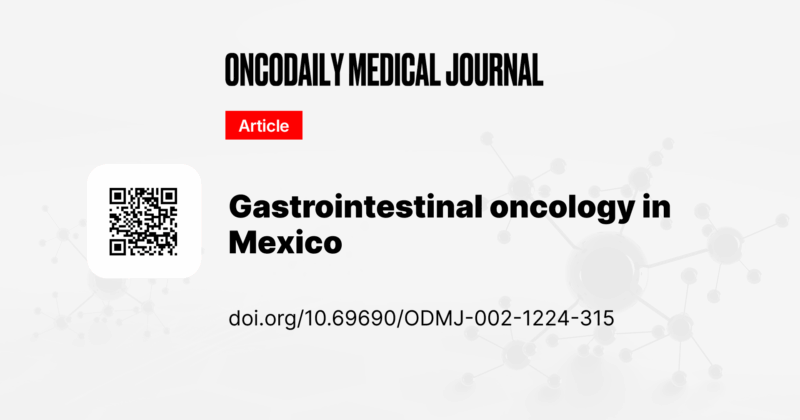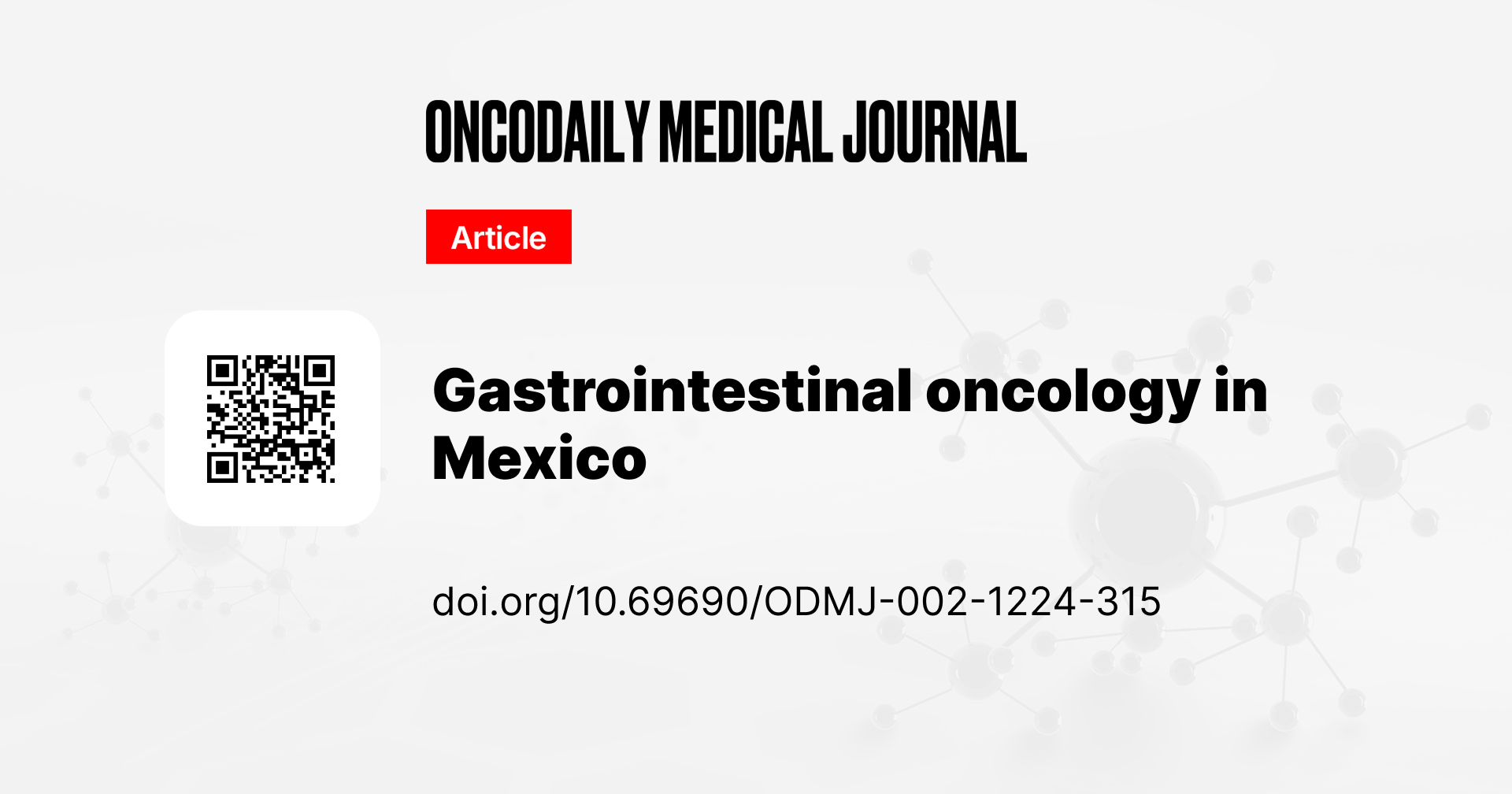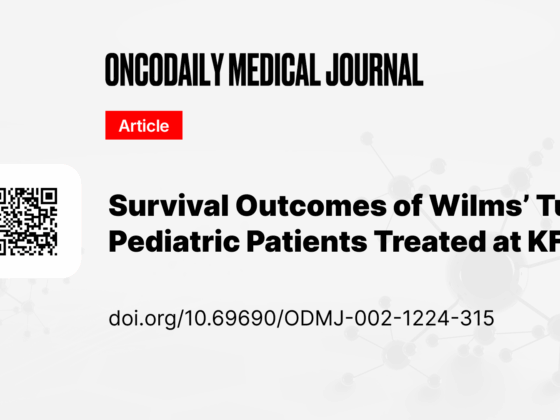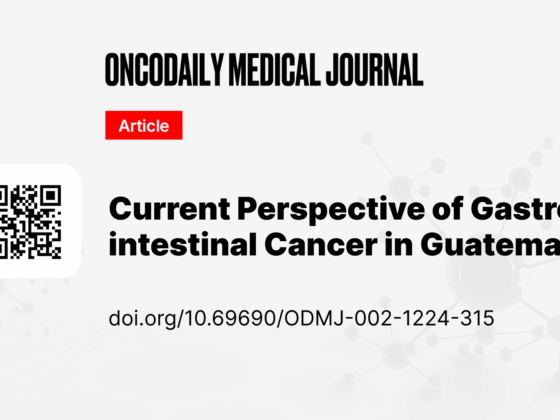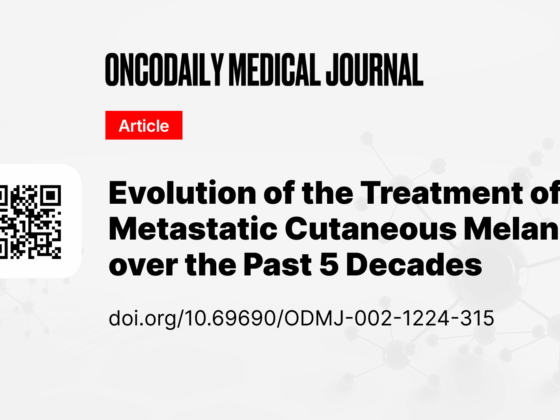In this article, we summarise a paper by Alejandro Noguez-Ramos et al., published in the OncoDaily Medical Journal, outlining Mexico’s GI-oncology landscape, epidemiology, health-system structure, treatment availability, training, and near-term opportunities.
Title: Gastrointestinal oncology in Mexico
Authors: Alejandro Noguez-Ramos et al.
DOI: 10.69690/ODMJ-002-0425-340
Full article
Mexico’s gastrointestinal (GI) oncology profile differs from regional and global patterns. Compared with Latin America and the world, incidence of oesophageal and gastric cancer is lower in Mexico, yet gastric-cancer mortality remains similar, pointing to late detection and care gaps. Across GI sites, colorectal and liver cancers are leading causes of death (Mexican mortality rank: colorectal 4th, liver 6th, gastric 7th; pancreas 10th; oesophagus 18th). Precision oncology, checkpoint inhibitors, and targeted agents have improved outcomes in colorectal, gastric, biliary, pancreatic, and hepatocellular cancers, but availability and financing remain uneven.
The care ecosystem is fragmented across social security institutions (IMSS, ISSSTE, ISSEMYM, SEDENA, SEMAR, Pemex), the new IMSS-Bienestar network for uninsured populations, and the large private sector. Capacity is concentrated in major cities: 118 cancer units nationwide (65 public, 48 private, 5 university/social). Workforce is stretched, about 2,202 oncology specialists (≈1 surgical oncologist per 133k people; ≈1 medical oncologist per 136k; ≈1 radiation oncologist per 382k). Advanced diagnostics are scarce: Mexico has ~50 PET/CT scanners (≈10 public), far below the WHO’s suggested density.
Cancer intelligence is a core constraint. The National Cancer Registry is evolving but lacks full institutional coverage and standardisation; Latin America’s registry reach (~6% of the population) pales against North America’s (~83%). Consequences include limited survival and quality-of-life data, with only single-centre studies illuminating specific diseases (e.g., colorectal stomas and QoL; surgical gains in pancreatic cancer).
Progress pillars are emerging. GI-oncology fellowships now run at the National Institute of Medical Sciences and Nutrition “Salvador Zubirán” (since 2020) and the National Cancer Institute (since 2023), seeding a subspecialty workforce. Multidisciplinary tumour boards function in a handful of highly specialised centres and selected private hospitals, with efforts to expand this model nationally. Drug access varies by institution and budget; COFEPRIS approvals coexist with real-world formulary and procurement limits (e.g., heterogeneous availability of HCC, gastric, and colorectal biologics/immunotherapies).
Near-term priorities: strengthen and standardise the national registry; scale H. pylori test-and-treat and colorectal screening; extend tumour boards beyond the capital; expand PET/CT and radiotherapy coverage; and align formularies/budgets to reduce therapy inequities across systems.
Bottom line: Mexico’s GI-oncology is gaining clinical sophistication, training pipelines, tumour boards, and precision drugs, yet data gaps, system fragmentation, and uneven access keep outcomes suboptimal. Coordinated registry, capacity, and financing reforms could yield fast, equitable gains.

